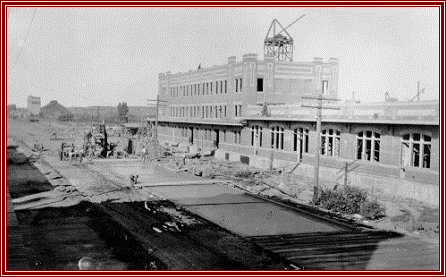Asphalt is one of the most common substances around us. It is found everywhere we go; on the roads, pavements etcetera. Therefore, it is interesting to know about its origins and the ways in which it has been used in the past.
The use of Asphalt goes as back as the fifth millennium BC where it was used by the Indus community to line the baskets used for gathering crops. The Bible mentions several instances where bitumen was used. It was used by the early Egyptians, Romans and Persians. It was considered a valuable resource and was mainly known for its waterproofing qualities and as a hydrocarbon deposit to be used in wars.
During the 1500s the use of asphalt in Europe started being observed. One of the first uses known was in Dunrovnik where the ships were tarred and exported to Venice. After the French revolution in 1830, there was a sudden increase in the use of asphalt.It was being used for pavements, flat roofs, and the lining of cisterns. This trend was observed probably because of the discovery of natural asphalt deposits in France. One of the earliest uses in France was the laying of about 24,000 square yards of Seyssel asphalt at the Place de la Concorde in 1835.

The use of asphalt has also been witnessed in early art and photographic technology. Joseph Nicéphore Niépce produced the oldest surviving photograph using this technology. However, this practice was not very pragmatic as it required several hours of exposure. From the 1850s to the 1920s it was in common use as a photoresist in the production of printing plates for various photomechanical printing processes. Although a lot of artists used asphalt in their artwork, it soon proved to be unsuitable for such a use due to its’ certain properties. It has the potential to corrupt and change the properties of other ingredients when mixed with them. Théodore Géricault‘s Raft of the Medusa (1818–1819) is a very famous example to prove the destructiveness of asphalt. Asphalt caused the brilliant colors to change to dark greens and blacks and caused the paint and canvas to buckle.
In the United Kingdom asphalt was earlier used for etching. In 1834, the first British patent for the use of asphalt/bitumen was Cassell’s patent asphalte or bitumen. After being used for pavement in France and Belgium, asphalt made its way to the United Kingdom. Claridge’s Patent Asphalte Company was formed in 1838 for the purpose of introducing to asphalt to Britain in its natural state from the mine at Pyrimont Seysell in France. One of the first pavements laid down was the asphalt pavement in Whitehall. In 1838, there was a flurry of entrepreneurial activity over asphalt and its uses went beyond paving. For example, asphalt could also be used for flooring, damp proofing in buildings and for waterproofing of various types of pools and baths. In 1914, Claridge’s company, together Clarmac Roads produced ‘tar bound macadam’. However, the process and growth was hindered due to the World War.
The uses of asphalt in the United States date back to the 13th century. It was mainly used as an adhesive, decorative substance and a sealant or a waterproofing agent for baskets. Asphalt has been used to pave roads in the US since at least 1870 when a street in front of the Newark, NJ City Hall was paved. In 1876, asphalt-based paving was used to pave Pennsylvania Avenue in Washington. Asphalt/bitumen was also used for flooring, paving and waterproofing of baths and swimming pools during the early 20th century, following similar trends in Europe.

"Excellent job! Everything went well, from Chris’s quick return phone call, the quotation visit, through to the end result...a quality driveway. Than..."
